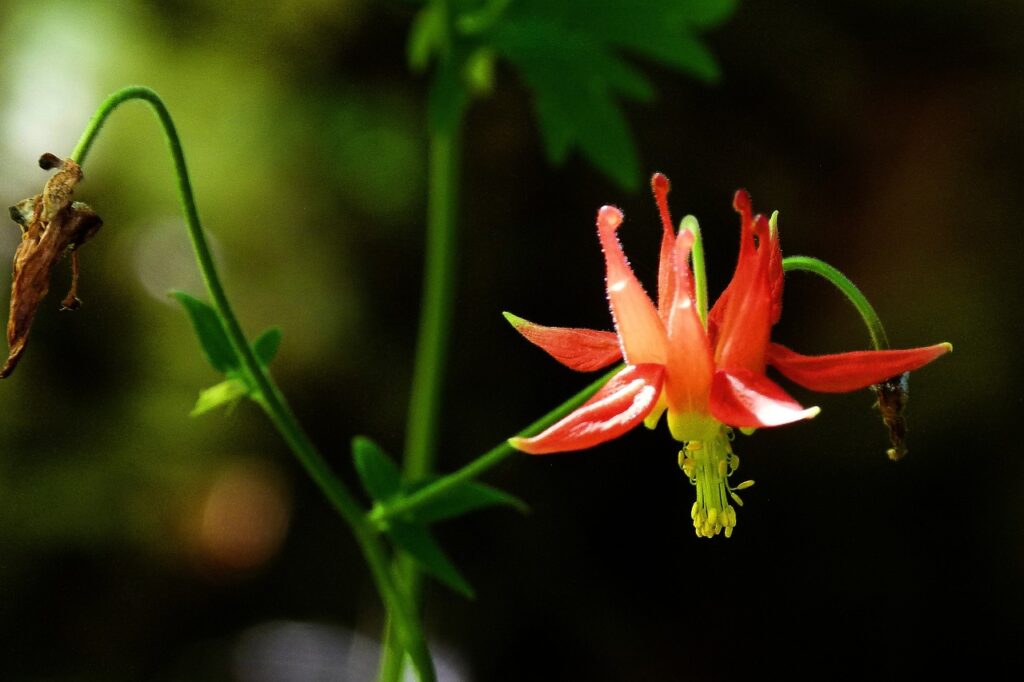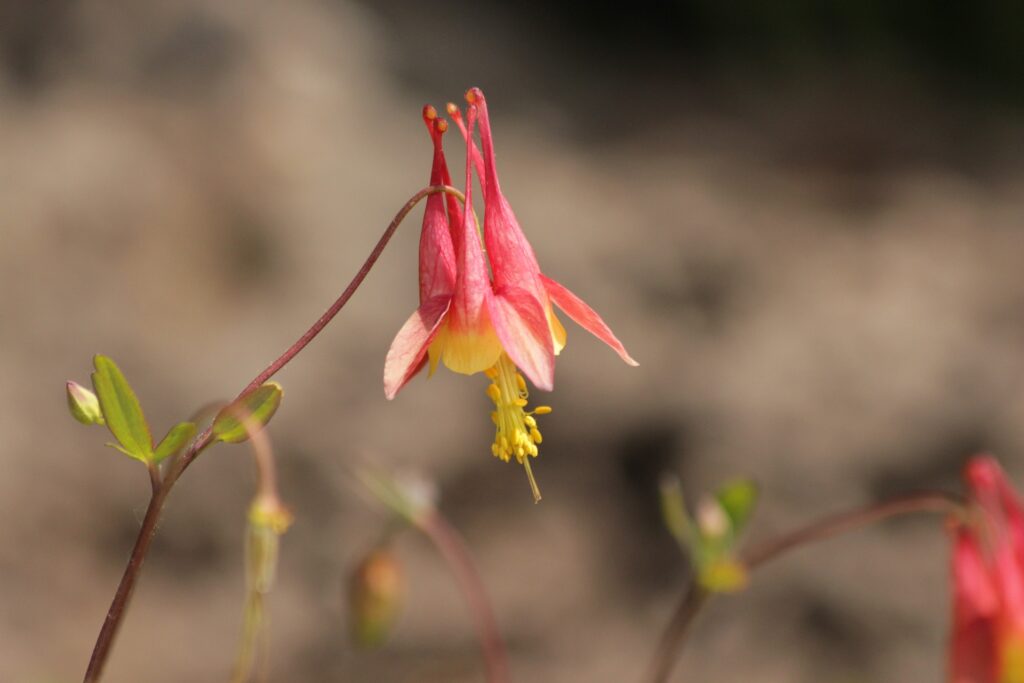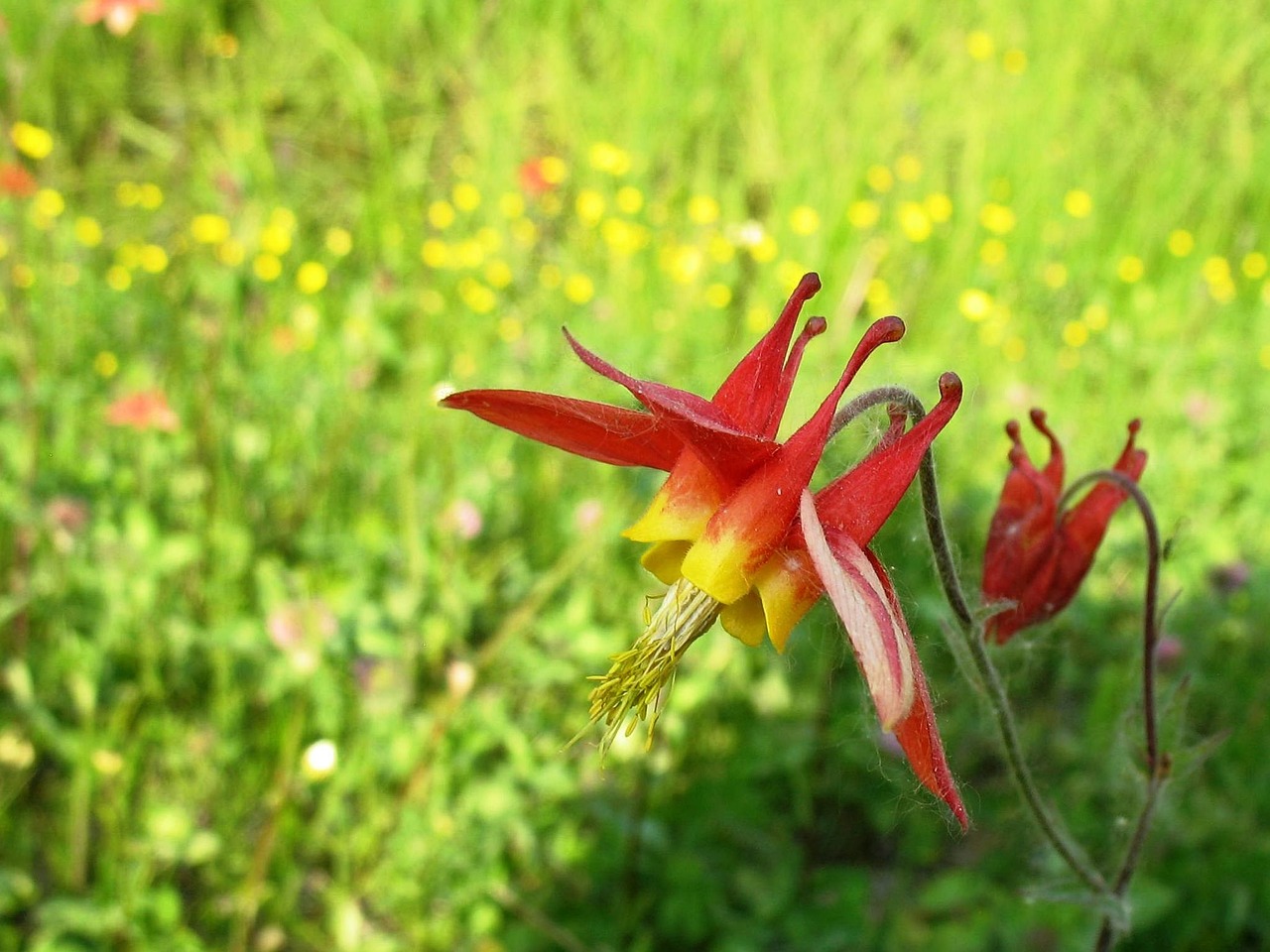Red Columbine, Time to Bloom
As spring unfolds its vibrant arras, one of the season’s most captivating blooms makes its appearance: the red columbine (Aquilegia canadensis). Known for its distinctive red and yellow flowers, this perennial plant not only brightens gardens but also holds a rich tapestry of history and cultural significance.
Beyond its practical uses, the red columbine is steeped in folklore and symbolic meanings. The flower’s shape, with its delicate, spurred petals, was thought to resemble a gathering of doves. This imagery connected the columbine to peace and love, as doves are traditional symbols of these qualities. In the language of flowers, the columbine sometimes represents foolishness or folly, a nod to the spur-like extensions reminiscent of a jester’s cap. However, red columbine specifically can symbolize anxiousness and trembling, reflecting its delicate, nodding flowers that quiver in the breeze.
A Springtime Marvel
Red columbine typically blooms from April to June, depending on regional climates. These flowers thrive in partial shade to full sun and prefer well-draining, loamy soil. Their nodding, spurred blossoms are particularly attractive to hummingbirds and other pollinators, making them a valuable addition to any garden focused on biodiversity. Planting red columbine can start from seeds or transplants, ideally done in early spring or fall. With moderate watering and minimal fertilization, these hardy plants can flourish, bringing vibrant color to various landscapes.
A Touch of History
The red columbine holds a special place in Native American traditions. Various tribes utilized the plant for its medicinal properties. The Cherokee, for example, brewed an infusion of the root to treat headaches and fever, while the Menominee used the plant as a love charm. The seeds, when crushed, were applied to rashes and skin conditions, showcasing the plant’s versatility in traditional medicine. The allure of the red columbine extends across continents and centuries. In Europe, its relatives were often depicted in medieval and Renaissance art, symbolizing the Virgin Mary or the Holy Spirit due to their dove-like appearance. In the United States, Thomas Jefferson, one of the nation’s Founding Fathers, cultivated red columbine in his Monticello gardens, appreciating its beauty and ecological value.
Cultivating a Legacy
Growing red columbine in your garden is not just about enjoying its beauty; it’s about connecting to a broader cultural and historical narrative. These plants are easy to care for, requiring well-draining soil, moderate water, and occasional mulching to retain moisture and suppress weeds. Growing red columbine can be a rewarding experience, as it is a beautiful and hardy perennial that attracts pollinators.
As spring reaches its peak, now is the perfect time to appreciate and cultivate the enchanting red columbine, celebrating both its visual splendor and its deep-rooted heritage.
(Edited by Caroline Fu)














